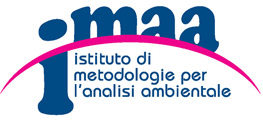Project
Summary The goal of this project, funded by MAE (Ministero Italiano degli Affari Esteri), is to achieve advances in knowledge, methods and technologies to support and facilitate a smart management of cultural sites which require constant monitoring activities to preserve their integrity. This project proposal is mainly focused on synergic Italian-Chinese research activities, training and exchanges of working experience in the field of remote sensing, geophysics, diagnosis tools applied to Cultural Heritage. These activities will be implemented on three outstanding case sites. Two are included in the World Heritage: Herculaneum in Italy (in collaboration with Herculaneum Conservation Project) and Hongcun Village in China, the third is the Silk Road, candidate to be submitted by Chinese Government to the World Heritage Committee for consideration to be inscribed. This project proposal is lead by the: (i) common Italian and Chinese interests in obtaining advances, operative tools and technologies for the protection and enhancement of cultural heritage with particular reference to sites included in the UNESCO list; (ii) the extraordinary cultural heritage witnesses of ancient civilizations in both countries; (iii) complementary skills which characterize the Italian and Chinese researchers involved in the current proposal with particular reference to the CNR (institutes IBAM and IMAA) and the CAS; (iv) the opportunity to share and use satellite data of Italian and Chinese space agencies. Main motivations The main motivations of this bilateral project are based on the : 1- perceived Italian and Chinese needs to technologies for the knowledge, protection and enhancement of cultural heritage; 2- complimentary skills and of scientific expertise (remote sensing and diagnostics for the Italian research group, and geophysics and ICT for the Chinese research group); 3- possibility and opportunity of using satellite data provided by the national space agencies of the two countries. The project aims to share and apply advanced technologies including Earth observation, ICT and diagnostic tools aimed at the: i) evaluation and mitigation of natural and man-made risks for cultural heritage; ii) development of strategies for conservation of monuments and historical sites; iii) monitoring of compliance with the requirements imposed by UNESCO in the field of protection and preservation of natural and cultural heritage for tourism, sustainable use of the architectural heritage and cultural landscape. The goal is to achieve advances in knowledge, methods and technologies to ensure a smart management of UNESCO sites, which are highly exposed to natural and human risks and require constant monitoring to preserve their integrity. These objectives will be pursued through: 1) exchange of experiences, expertise and researchers in the fields remote sensing, geophysics, diagnostics and ICT for the knowledge, preservation and promotion of cultural heritage; 2) Educational and training activities in the use of technology applied to the management of Cultural Heritage; 3) Pilot projects on three outstanding case sites, among which two included in the World Heritage, such Herculaneum in Italy (in collaboration with Herculaneum Conservation Project) and Hongcun Village in China, the third is the Silk Road, a cultural heritage candidate to be submitted by Chinese Government to the World Heritage Committee for consideration to be inscribed.







